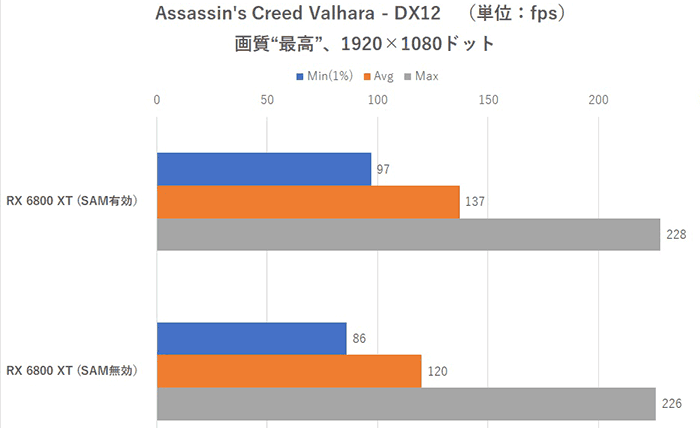AMD recently introduced a new feature for users of its latest technologies, an accelerating technique dubbed Smart Access Memory, or SAM for short. It first revealed the tech at the Radeon RX 6000 launch event. It raised a few eyebrows though, as it was stated that SAM would only become available to those packing the latest Ryzen 5000 Series processors, paired with the newest graphics cards from AMD – the Radeon RX 6000 Series.

In the middle of last month it was revealed that Nvidia was working on a SAM-a-like technology, which would speed up the operation of its GeForce GPUs on PCs, as well as working on a range of AMD/Intel platforms – as it turned out SAM was based on utilising a PCIe spec standard. It seems like a pretty easy gain of 10 per cent in gaming performance for a modest amount of development effort.
Now various sites have reported that Intel motherboards are already capable of pairing up with AMD RDNA 2 GPUs and enabling some SAM action.
ComputerBase.de has shared some official Asus slides discussing the use of a beta BIOS on Intel Z490, H470, B460 and H410 chipsets (and of course using Intel processors). It has updated that ASRock and MSI are already working on similar BIOS updates, while Gigabyte is still in the investigation stage.

The Asus slides are quite informative and it is claiming SAM enabled will provide up to a 13.37 per cent uplift, an interesting number gained from comparative tests in Forza Horizon 4. Borderlands 3 was less receptive to the update, at nearly 4 per cent faster. In the Asus tests an Intel Core i7-10700K and an AMD Radeon RX 6800 XT were used.
Ascii.jp did some testing with similar configurations systems to the above (Asus Z490 motherboard, Intel Core i9-10900K, AMD Radeon RX 6800 XT). The Japanese site checked for performance gains in four titles; Assassin's Creed Valhalla, Forza Horizon 4, Red Dead Redemption 2 and Rainbow 6 Siege. All games enjoyed worthwhile performance uplifts except for Rainbow 6 Siege, which saw a negligible effect.

It is good that this technology is proliferating across platforms but it opens a question about whether SAM technology should be delivered to previous gen AMD Ryzen processor and motherboard users. If it isn't tied to any special Ryzen RX 5000 Series CPU / 500 chipset / Ryzen 6000 Series features – and tests show it isn't – it looks like AMD and/or its motherboard partners will have to make a move.
Updates:
Since I wrote the above MSI has published a press release about supporting SAM / Re-Size Base-Address Register support on its newer Intel motherboards. It seems to have inadvertently shared a CPU-Z screenshot of an Intel Rocket Lake system too.
In another update, via TechPowerup, it seems that there is no possibility of Ryzen 3000 Series or older AMD processors supporting SAM due to hardware limitations. Meanwhile, it is claimed it would be possible for Intel platforms to support this feature as far back as Haswell - but good luck getting those BIOS updates.













